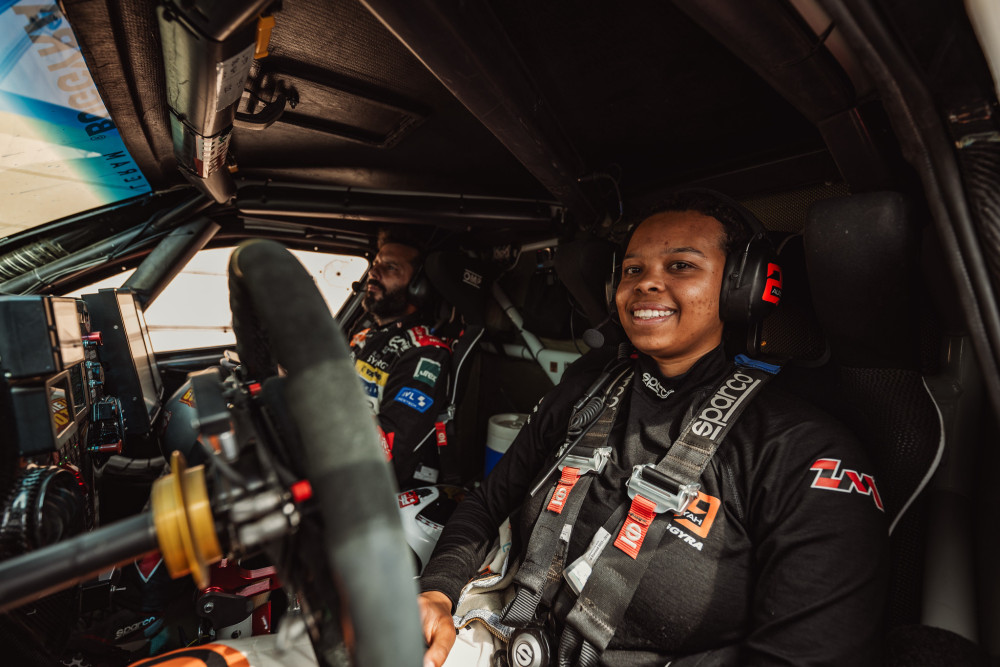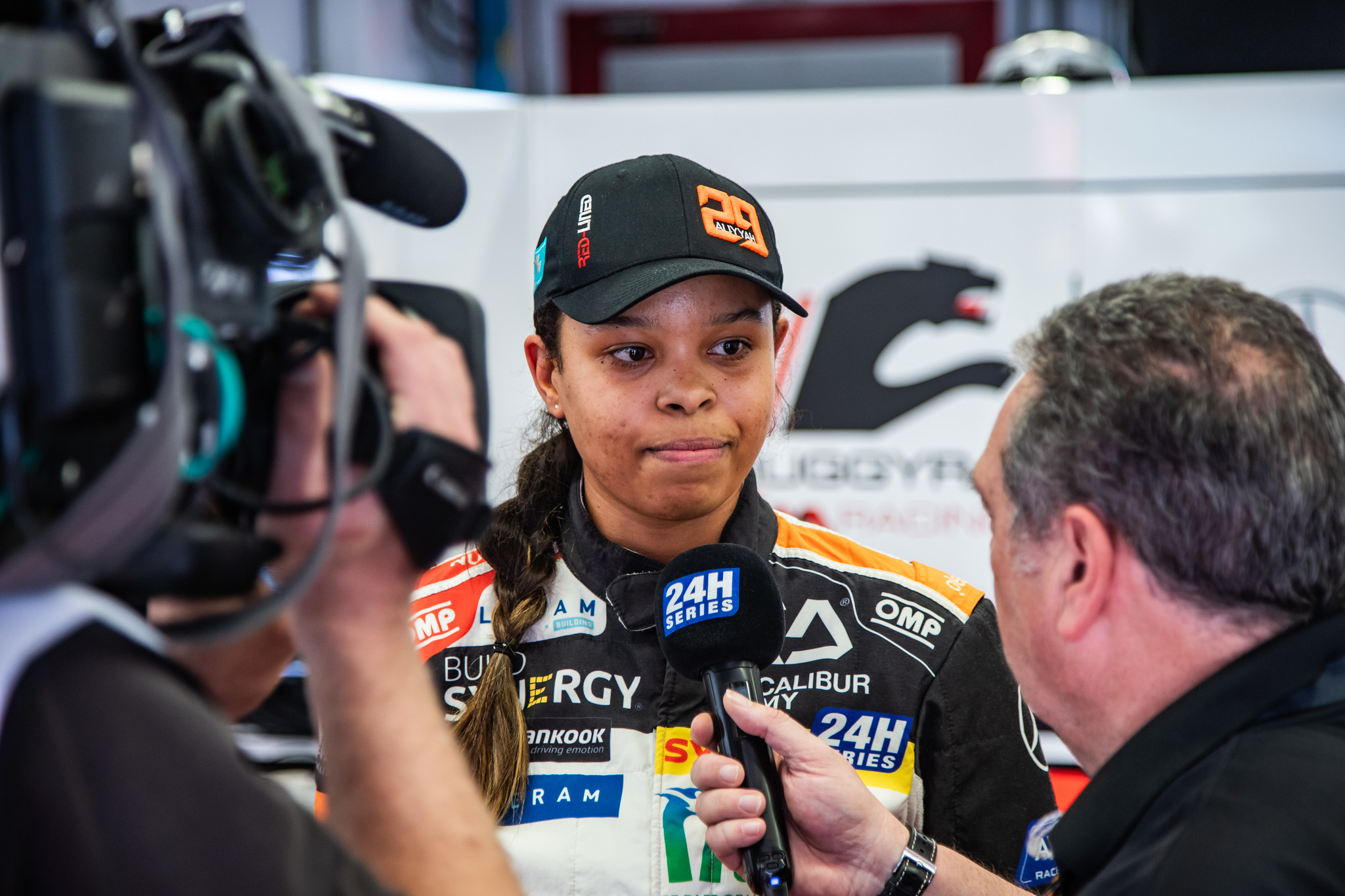At her 19 years of age and with only five years of motorsport experience under her belt, Aliyyah Koloc has already achieved a lot in international motorsports. She was the French Junior and Female truck racing champion in 2021 and champion in the Middle East Cross Country Bajas in the T3 category in 2022. She drove in EURONASCAR and GT sprint races and holds two world speed records in truck racing. Since last year, she has been concentrating on a combined program of GT endurance racing in the 24h Series and off-road rallying in the FIA World Rally-Raid Championship (W2RC), including the Dakar, and selected Middle East Cross-Country Bajas. A very unusual combination, but how difficult is it really on a physical and mental level to combine both?
GT endurance and off-road rallying both require driving for long periods of time. But whereas in GT, you are in the relative comfort of the track, with your team just a few minutes away to help in case of any issues, off-road rallying is a different story where the driver is alone in the car with his or her navigator, for long hours each day, with the team support sometimes hours away and some places accessible by helicopter only. In addition to driving, the crew not only has to navigate and find their way – and thus sometimes go wrong – they also are the first intervention crew in case of any mechanical issues. The average speed is much lower than in circuit racing, but the terrain is often unknown and extreme, with dunes, loose sand, or rocks.
The strains of a long-distance rally raid: The Abu Dhabi Desert Challenge (ADDC)
Let’s look in some more detail at the recent Abu Dhabi Desert Challenge (ADDC), part of the W2RC, which ran over five days, 1,200 kms of selective stages, and an average of 5-6 hours in the car each day.
“In Abu Dhabi, I drank at least 2 liters of water each day while driving. That’s still not enough but I forget to drink when I drive, I have to work on that,” says Aliyyah. “Also, you don’t have time to eat, because in the Ultimate category, the breaks are only a couple of minutes long while refuelling. So every morning, before leaving the bivouac, I ate some porridge, prepared by my dad.“ The average calorie requirement on the Dakar is around 2,000 to 2,800 calories a day, so Aliyyah lost 4kgs in the two weeks of the event. Her average heartbeat was 145 beats per minute while in the car. Whereas the heart rate is comparable to GT and Formula One, the calorie requirement is much lower in both series, being around half of what a W2RC racer needs.
But it is not just the physical aspect, that is daunting. The driving is too. At the ADDC, Aliyyah made between 800 to 1,000 critical decisions each day. She changed gear approximately 1,400 times each day, needing 32kg of force, which puts an enormous strain on the driver’s wrist. “Immediately after my first race in a T1+ car last year, I realized that I needed to improve my wrist strength because after a lot of shifting, I had sore wrists,” Aliyyah explains. To do that, she has been working with a coach specializing in the needs of rally drivers.
Even compared to the often-called pinnacle of motorsport, Formula One, the physical and mental stress on off-road racers, particularly during the Dakar or the marathon events of the W2RC, are incomparably higher. An F1 race lasts for a maximum of 2 hours, the Dakar for two weeks, with five to eight racing hours on average in the car each day, plus 300-400 km of route sections to the start and after the finish. And contrary to F1 or GT racing, no difference is made in W2RC between amateur or professional drivers.
Before Aliyyah returns to off-road rallying with the Ultimate Rally Raid in Spain and Portugal from April 2 to 7, she had a little ‘break’ at the 12h of Mugello last weekend, the first race of the 24h Series this season. Together with her co-drivers David Vršecký and Adam Lacko she won the GT4 class and set fastest time in the GT4 category with an average speed of 158.60 kph!




